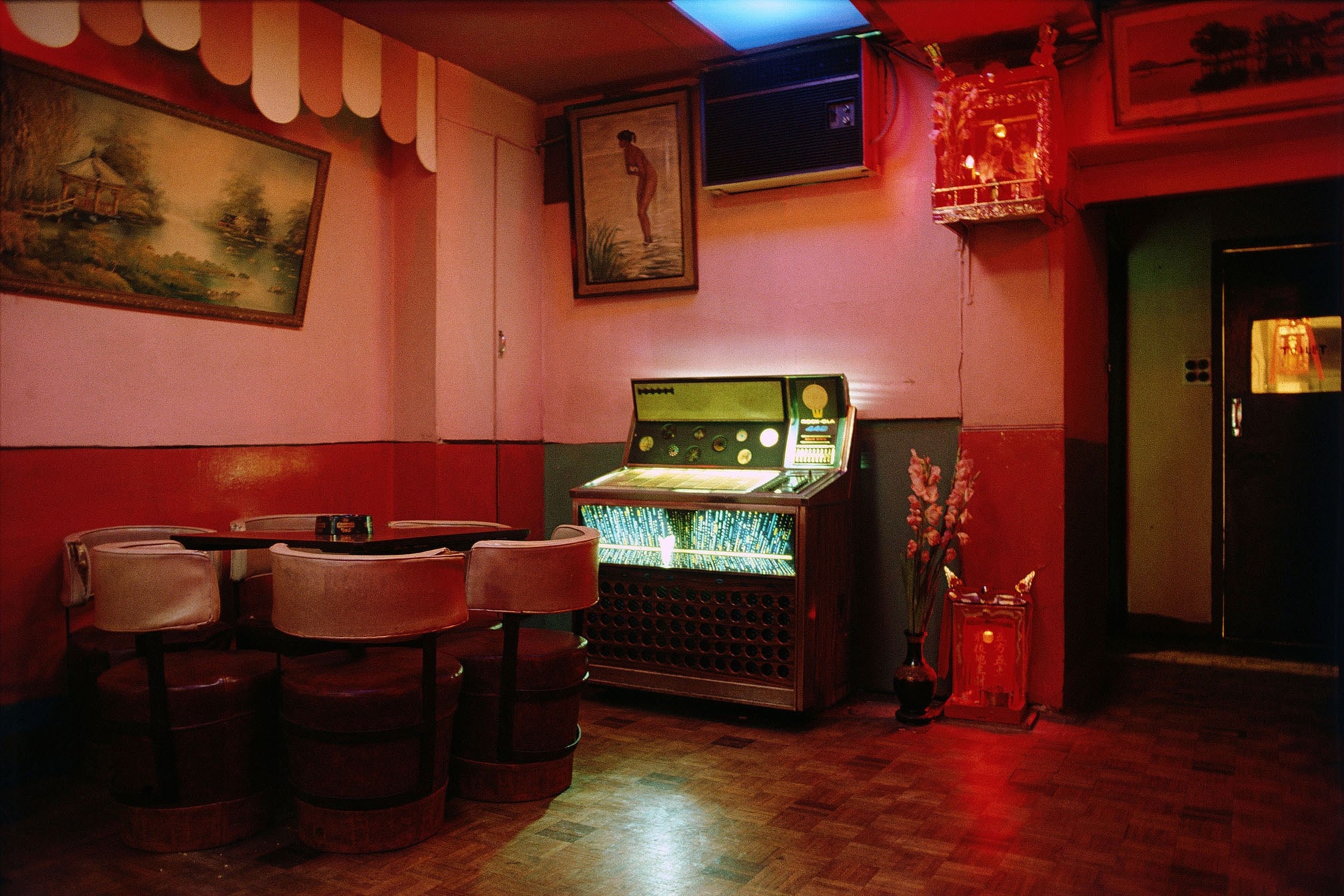 Features
Features
Nocturnal & neon: Photographer Greg Girard spent 30 years immortalizing Asia at night
Arriving in Asia in 1974, his photographs offer a starry-eyed look into the early days of club culture & are currently on display in Hong Kong
In 1974, Greg Girard arrived in Hong Kong on a freighter from San Francisco armed with not just a camera slung over his shoulder but a starry-eyed vision of capturing the raw electricity that was charging through the rapidly changing continent at night. With Asia full of promise and infinite possibilities, the Canadian photographer was at once spellbound and spent the 30 years that followed navigating the chaotic yet unencumbered neon-lit alleys of Hong Kong, Shanghai, Tokyo, Thailand and Vietnam.
We've long been following Greg on social media for his ability to transport us back to an exotic world of retro appeal on the daily, evoking memories of those who shaped the culture that we Asiaphiles know today as if through a parallel world but changed almost beyond recognition. His photographs capture people and places that look strangely similar across late-night landscapes of post-war Asia, yet juxtaposed in our imaginations against the hyper-modern megacities that tower over us today.
During his decades-long stay on the continent, Greg produced work that examined the social and physical transformations that were taking place in Asia during its Golden Age for National Geographic, Time, Newsweek, Fortune, Forbes, New York Times Magazine and more. Aside from his commercial work, Greg chronicled his time in Asia through his own photographs taken "unburdened by the consideration of whether a magazine might be interested in the pictures or not." Many of these have been turned into books like the seminal City of Darkness (1993), an exploration of Kowloon's Walled City, the Hong Kong high-rise and enigma that occupied one-hundredth of a square mile yet was still home to 35,000 people. Phantom Shanghai (2007), Hanoi Calling (2010), In the Near Distance (2010), City of Darkness Revisited (2014) and four other books followed, and heaps of unpublished work from his portfolio still exists.
One thing that remains unchanged in Asia from Greg's time to now is the existence of a culture built around creatures of the night (also what we — Mixmag Asia — like to document). The fever dream that Asia is a lawless land of ping pong shows, bottomless buckets and psychedelic smoothies might still exist to some degree but is a shadow of its former self, and we figured Greg was probably sitting on a lot of photos that documented the beginnings of club culture across Asia. So he kindly sent over some archival images that are a snapshot into "clubbing" in Asia beginning as early as the 70s, along with a few words that help establish a narrative.
Alongside this, some of his never-before-seen works are also currently on display in Hong Kong's Blue Lotus Gallery at an exhibition called HK UNSEEN, which is an ode to nocturnal Hong Kong between 1974 and 1989, and features photographs that are imbued with the noir allure and seedy pastels of Hong Kong in its prime.
As a Canadian, what about Asia initially inspired your interest and then kept you in the region as a photographer for three decades?
Growing up in Vancouver and photographing the city as a teenager, I suppose Chinatown was the first distinctly different world that I encountered at street level. Around the same time (the early 1970s), I came across a photograph of Hong Kong harbour, taken in 1962 by a Life Magazine photographer, that had a strange allure. It wasn't a typically scenic or exotic picture, but it mixed the familiar and the unfamiliar in a way I'd never seen or noticed before. It was probably the first indication that the way you thought about things determined how you saw them or didn't see them.
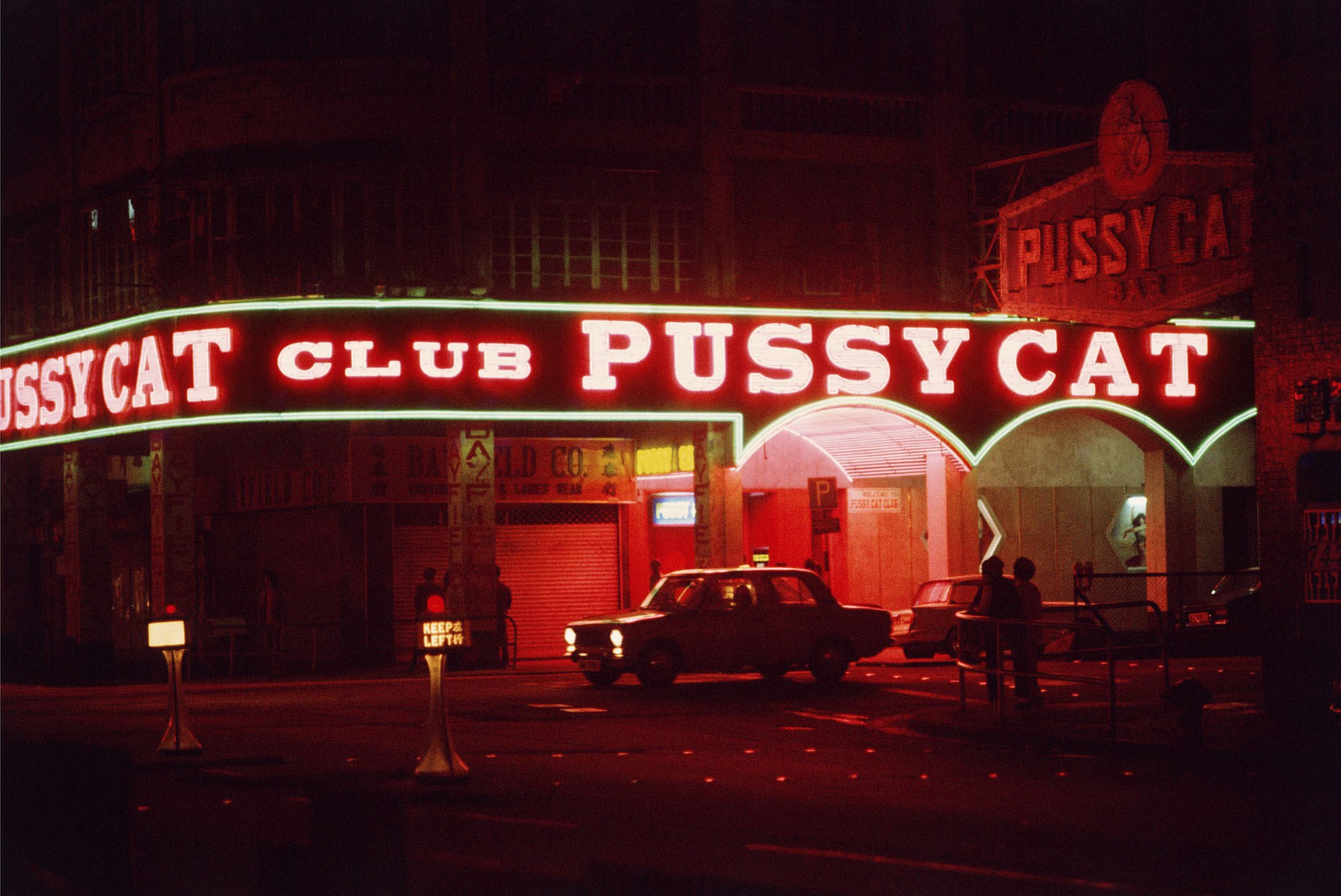
Pussy Cat Club, Hong Kong, 1974
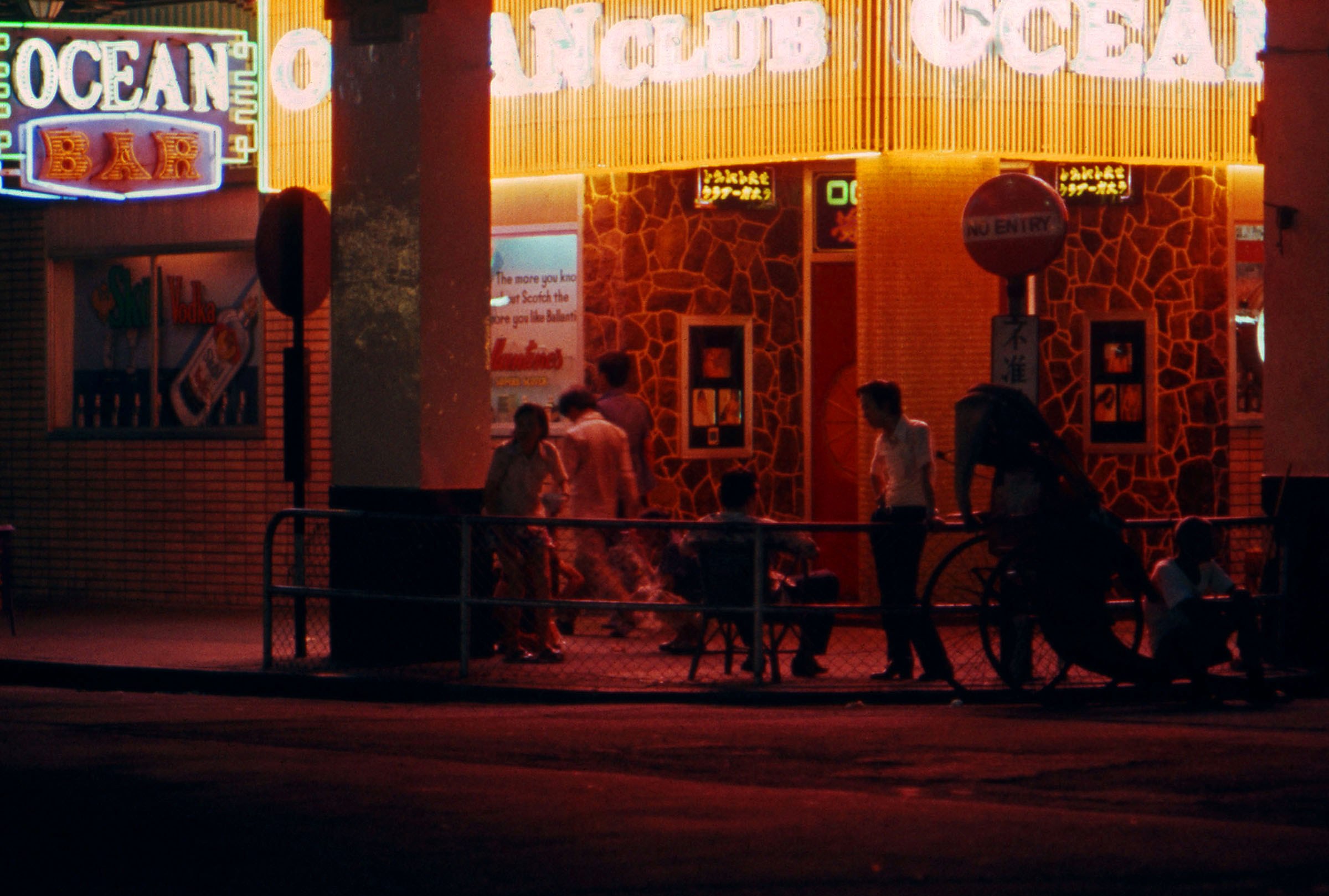
Ocean Club, Wan Chai, Hong Kong, 1974

Red Lips Bar, Hong Kong, 1975
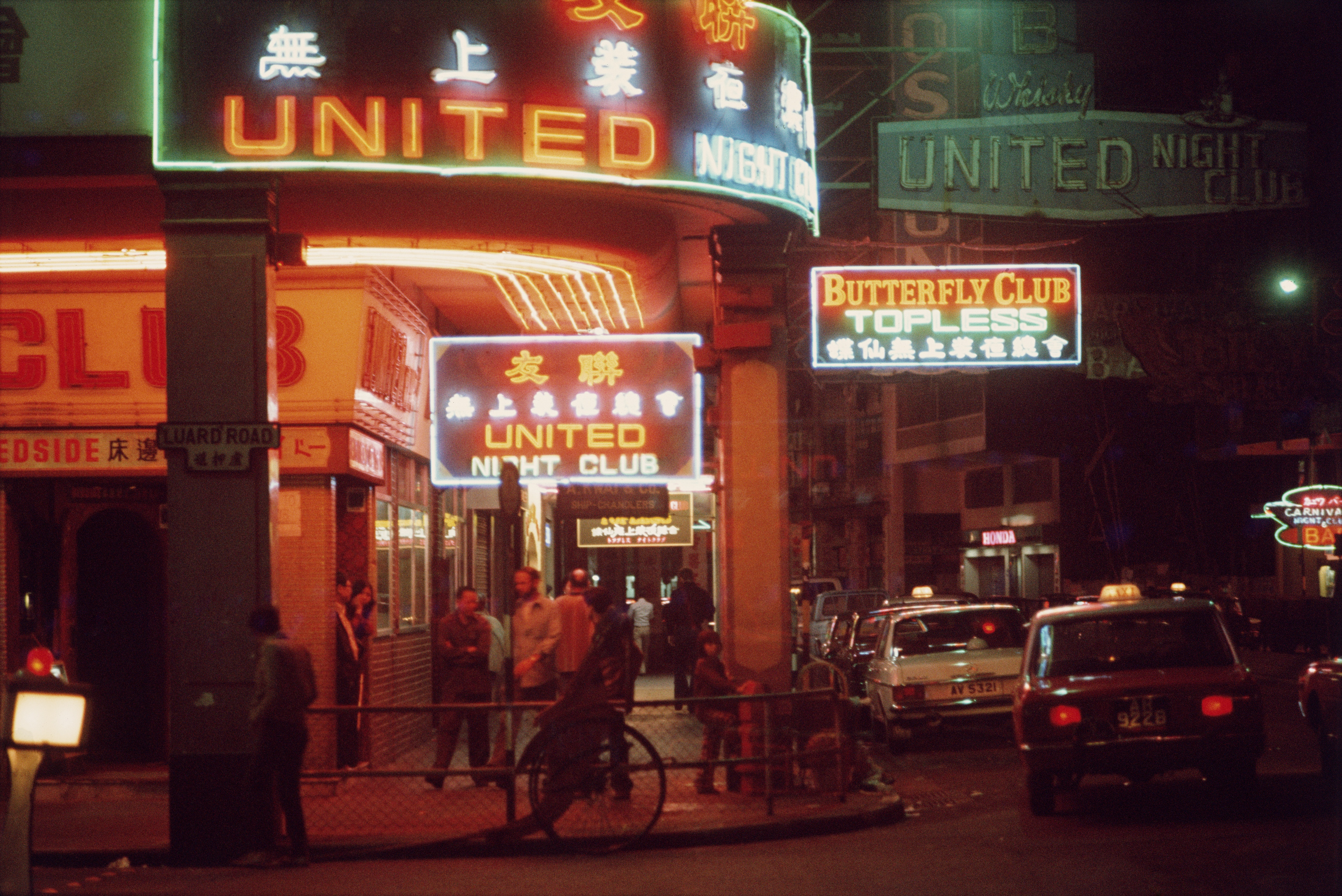
United Club, Hong Kong, 1975
You're described as a photographer "whose work has examined the social and physical transformation in Asia's largest cities for more than three decades." Can you tell us how you would describe the social evolution of the entertainment industry in Asia during the 30 years you spent captruing it?
I don't have any special insights into the entertainment industry, but one thing you can't help but notice is the way entertainment areas originally created for westerners (military, ex-pats, backpackers, etc) have evolved to now welcome pretty much anyone and everyone. Think of Wanchai in Hong Kong. Itaewon in Seoul. Khaosan Road in Bangkok. However, in the towns where the US still has military bases, in smaller towns and cities in Japan and Korea, for example, there still is a kind of divide between the places where the military go and the locals go. And you'll see signs that say (more in exasperation than racism) "Japanese Only". The difference between now and 40 years ago is that the world off-base is more expensive (and better educated) than the world on-base.
What were the nuances of bars, discos and nightclubs in Asia that really set the region apart from the West at the time?
I can only talk about what I saw, and when I saw it. How it compares to anything else, I couldn't really say. I'm sort of a dilettante bar-goer and club go-er. At least in the beginning, I was. I was probably more interested in trying to make photographs — of the atmosphere, of the people — than anything.
The first bar in Asia I went to was Yellow Submarine, on Hankow Road in Tsimshatsui. I'd taken a ship from San Francisco to Hong Kong and the Filipino crew members said that was the place to go in Hong Kong. 'Everybody Was Kung-Fu Fighting' by Carl Douglas and 'Superstition' by Stevie Wonder were played a lot in that bar. There were no age restrictions in those days, and there wouldn't be for many years. If you could pay for a drink you basically got served.
A couple of years later, I moved to Tokyo and discovered the city's jazz cafés and jazz clubs. Your readers might have heard of jazz kissa in Japan. Cafés (kissaten) are where customers go to listen to jazz LPs played on high fidelity stereo equipment. No talking. You read, write, smoke, nap, listen. But no talking. Hours and hours spent in those places The menu would read "coffee time", during the day; and "whiskey time", at night. In Shinjuku, I frequented a couple of live jazz clubs. At Pit Inn the performances started late morning and went into the evening, each session getting progressively more expensive. I tended to go to the early performances. I was 20, 21 years old. The first Tokyo disco I went to might have been Mugen in Akasaka. The system in those days was a flat all-you-can-drink charge. One price for men (more). One price for women (less).
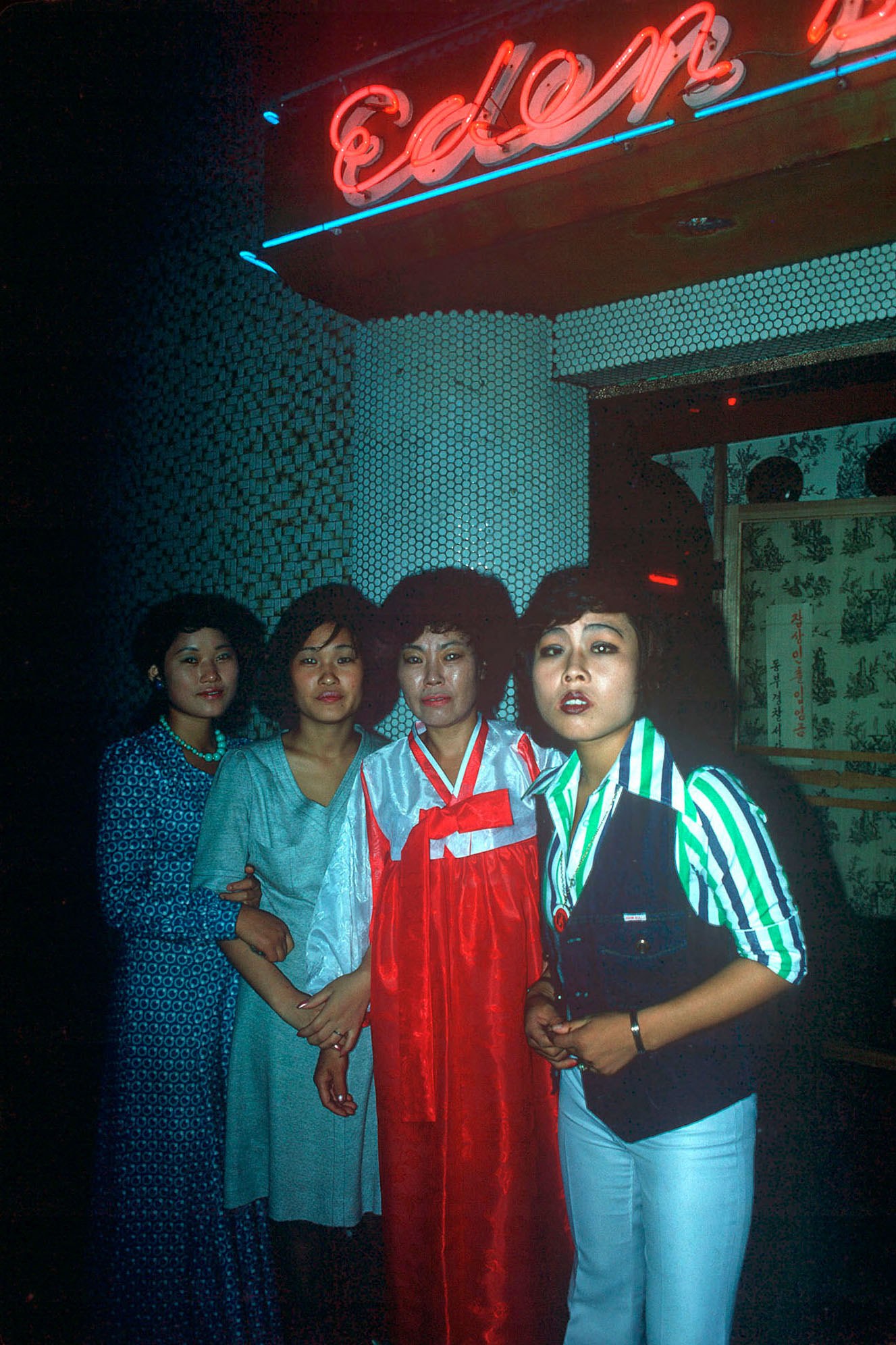
Eden Club, Busan, South Korea, 1976
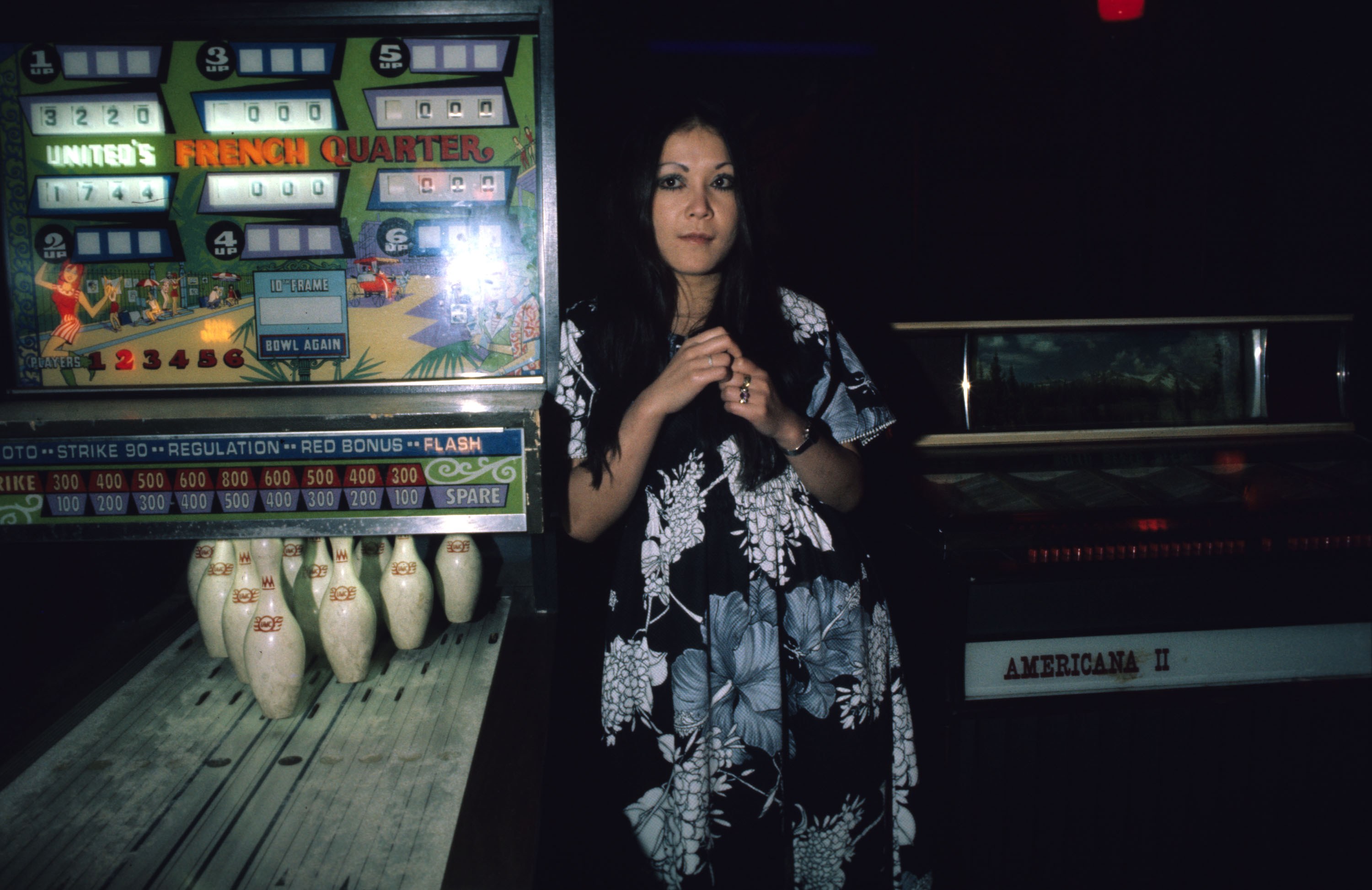
Texas Street, Busan, South Korea, 1976
How differently you must see nightclubs today, even in how they are portrayed in the media. Can you describe the feeling, the mood and the music inside nightclubs and discos during your time in Asia? What did that type of freedom mean or represent for people?
Except in mainland China, I never had any sense that people at clubs were thinking or feeling, "this is something new". Everywhere else evolved more or less normally, shall we say. Some places quicker, some slower, some more evenly, some less etc. But China is unique in that it was isolated for so long from the music, culture and urban life that evolved in the West, and anywhere in the West's orbit. It wasn't until the 1980s that China re-engaged with the outside world and not until the 90s that people started doing what had been denied for so long. So, the clubs in China seemed to have a strain of excess that the West and other places had maybe gotten out of their systems a long time ago. And at the same time as the excess was happening maybe half the people were visiting a club for the first time. So it was a mix that you don't really find in other places. That continued into the 2000s as far as I could tell.
Some of these images are featured in your book 'HK:PM Hong Kong 1974-1989' and are currently on display in Hong Kong at Blue Lotus Gallery. What about Hong Kong specifically was so exciting and what did the city's nighttime and nightlife culture feel like?
To a newcomer, the city had life that didn't end when the sun went down. I don't mean clubs and bars. I mean the streets were filled with ordinary folks, children, well into the neon-saturated night. Everything was open, apart from the banks. I first visited HK in the 70s but moved there in 1982 and for the next 15 years made a lot of pictures of the city at night, especially the less glamorous parts I guess you could say. Alleys and rooftops and factory districts, in addition to that early attraction of neon which was just matter of factly everywhere. There was so much of it that it was completely unremarkable except to a newcomer. I photographed in the bars and clubs as well. Walking around with a camera and flash in those days people would stop me and ask if I was taking souvenir pictures, selling prints to customers. (I sort of wish I had tried that approach).
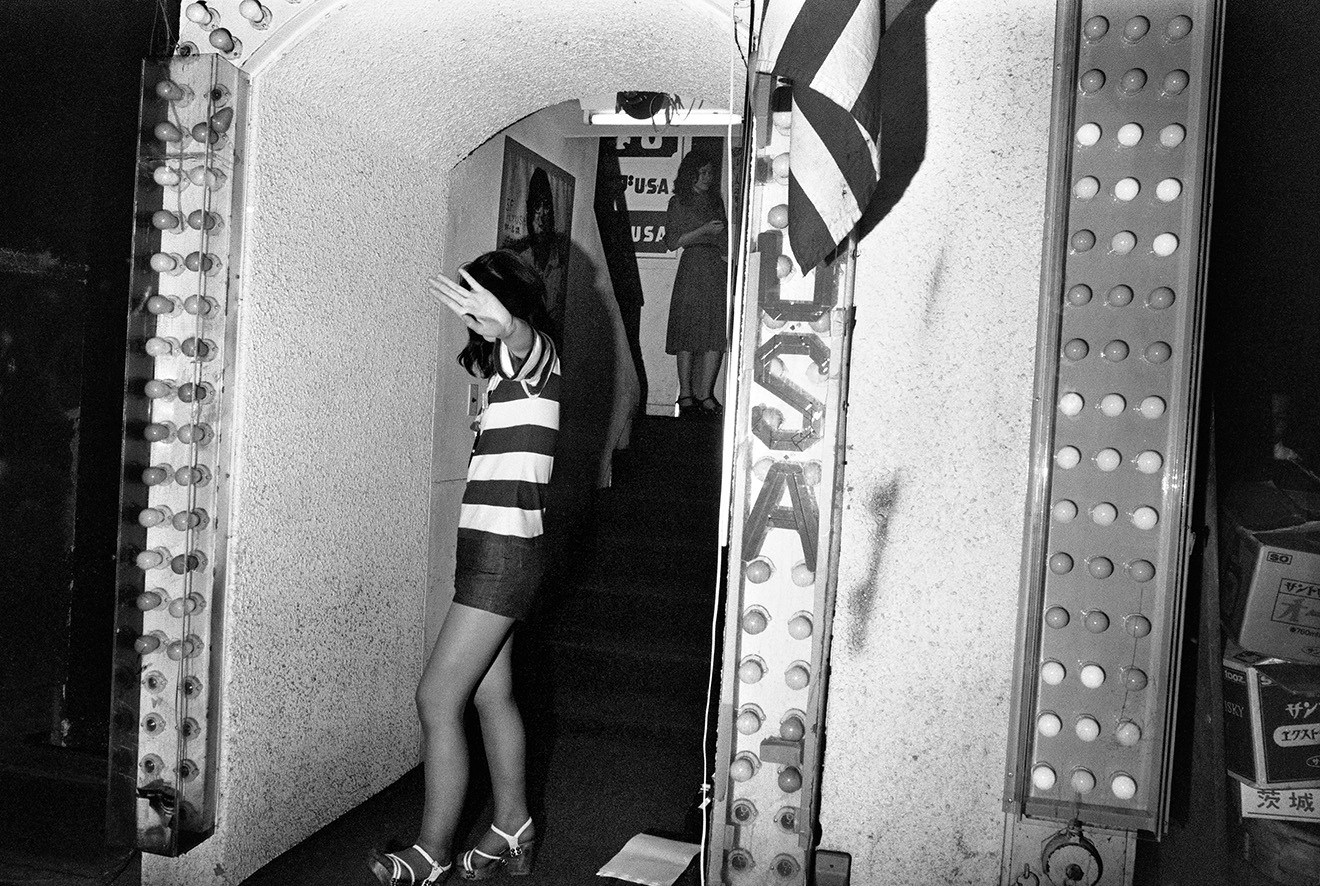
Kabukicho, Tokyo, Japan, 1976
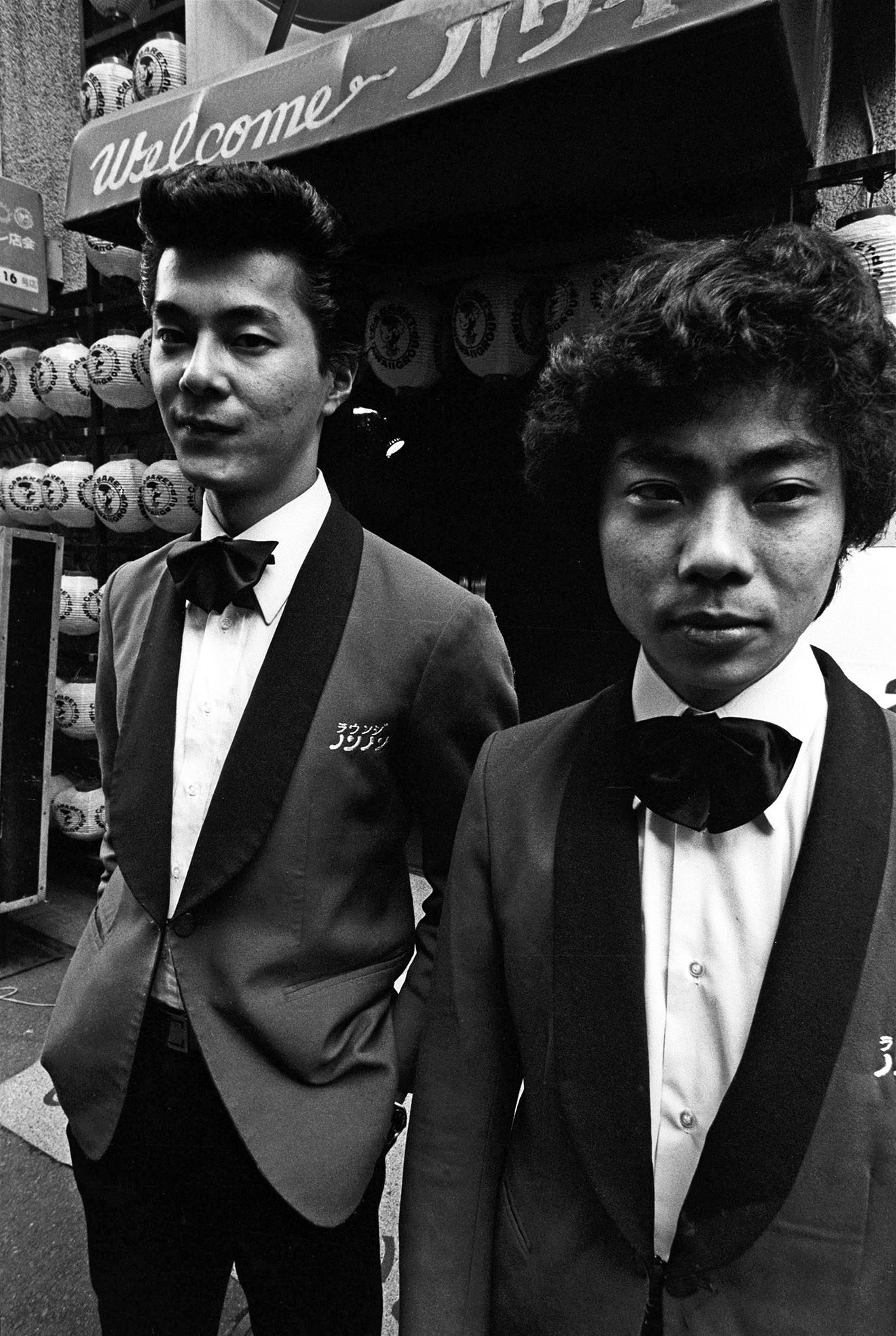
Kabukicho, Tokyo, Japan, 1976
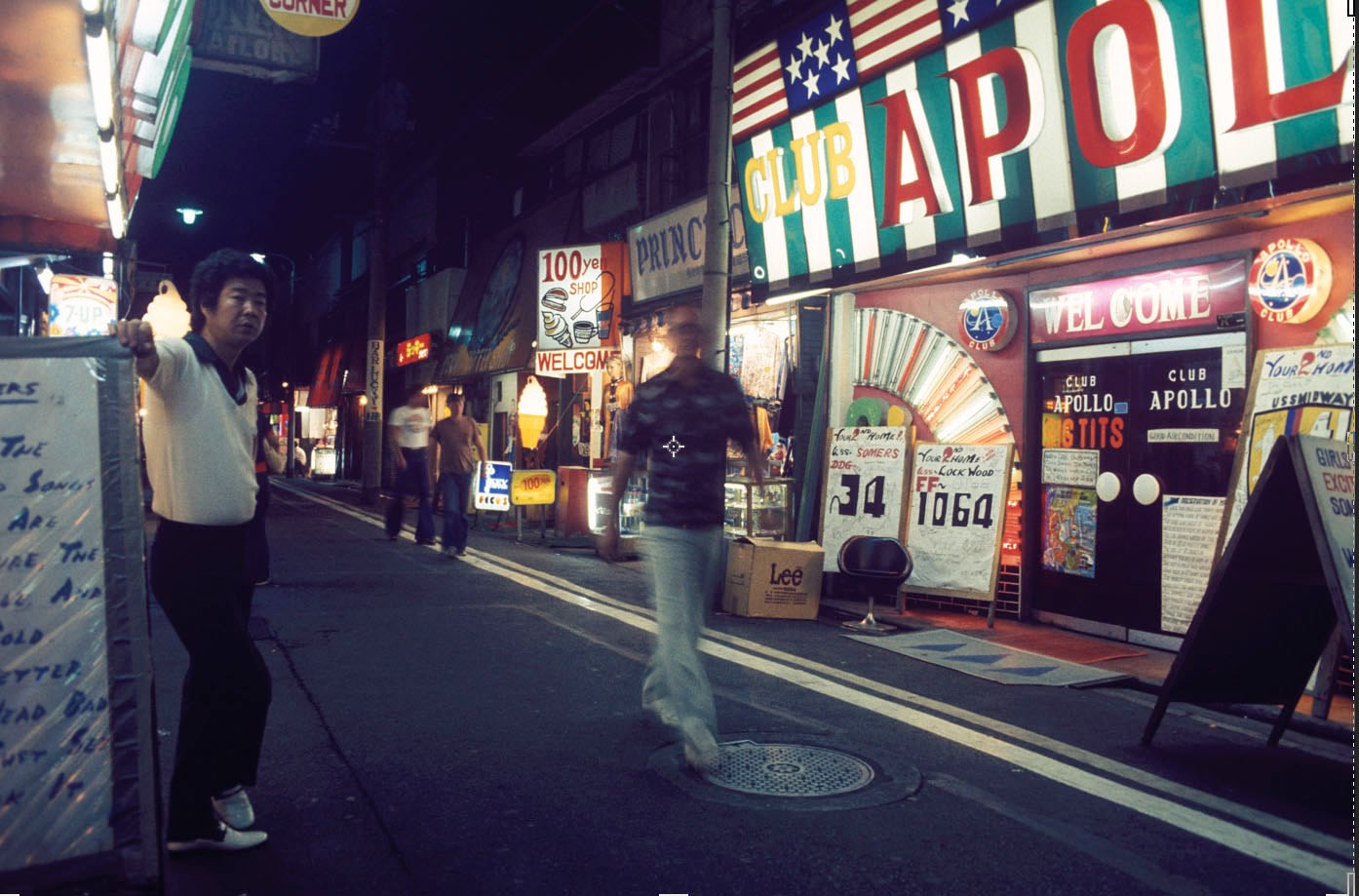
Club Apollo, Yokosuka, Japan, 1976
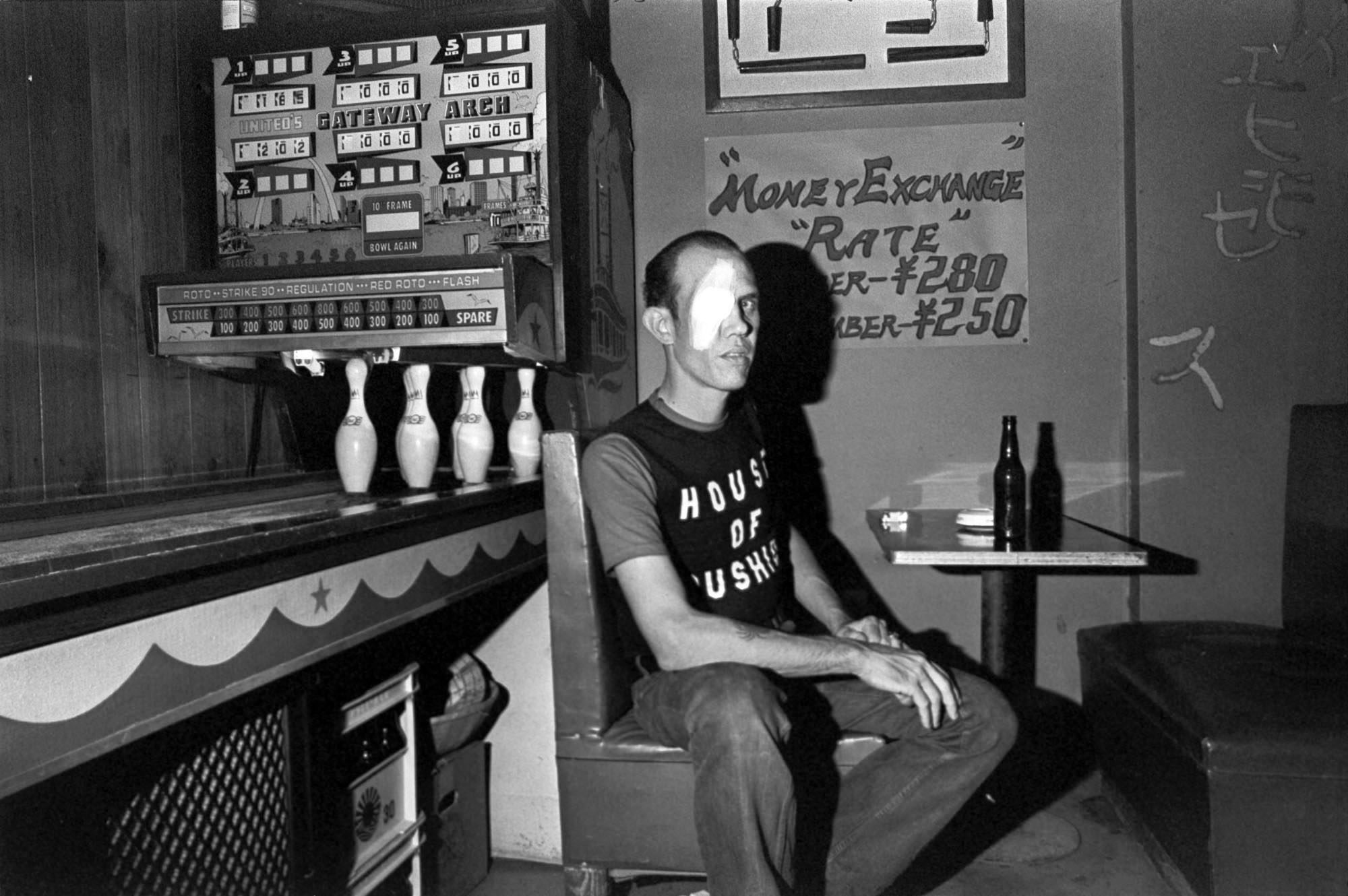
Yokosuka, Japan, 1976

Navy Base Town, Yokosuka, Japan, 1976
A lot of your work draws on the influences of western military bases in Asia. What do you feel was the impact of the presence of sailors and soldiers on nightlife culture at the time?
In the base towns, you were more likely to see the impact of the nightlife on the sailors and soldiers. It's maybe more telling to visit a bar district or nightclub district in the daytime when you can see the raw and unglamorous nature of a neighbourhood that was built to serve the military or foreign tourists.
Nobody leaves Asia without a raucous anecdote to tell in social situations until the end of time. What's the best story you have from within a night out shooting within a nightclub?
Here's a story I'll admit to: I was drinking in Patpong 2 in Bangkok in the late 90s. A friend and I had been to a couple of bars and when the bars with dancers closed at 2am, customers and girls and others migrated to the outdoor bars where the party continued. After a while, my friend called it a night and went back to the hotel and a young German guy sat down beside me. He had just arrived, and it was his first visit to Thailand. We got talking, and he mentioned how the girls were so beautiful but that he didn't think he could ever get past his qualms about paying for sex. He indicated a girl sitting at the end of the bar looking our way. I said something along the lines of: "paying for sex is one thing but you wouldn't be paying for sex with a girl if you went back to your hotel with her. I'm pretty sure she's a he". I left him with that thought and then said good night, good luck, picked up my camera and got up and left.
I got about 100 meters down the soi, heading back to my hotel, when someone smashed a bottle on the back of my head. I steadied and turned around to see that girl from the end of the bar, now with a box cutter in her hand. She took a swipe towards my face and I got the back of my left hand up, which she opened up in a long gash. She came at me again and somehow I managed to wrestle her to the ground. My camera went one way, her knife went the other. We sort of squared off again and then she changed her mind and bolted. Now looking like, not to be unkind, a man in a dress running up the street. I was bleeding a lot from the knuckles-to-elbow cut, and before I got too far, planning to walk back to my hotel, a plainclothes policeman appeared and said I'd have to go to a hospital and asked if I had money. I said I had and then we walked the short distance to Bangkok Christian Hospital on Silom. A young doctor took care of me, 77 stitches on my arm and a few on my ear and the back of my head as well. It was light by the time I got back to the hotel. I can't say for sure what happened but the only thing that makes any sense is that after I left my German friend, he was approached by that girl, and, declining her offer, he explained unnecessarily, "because that guy who was sitting here said you're a man".
On my next trip to Bangkok, I went back to the same bars and sat there until late so as to not allow a perfectly fine city be ruined by a German tourist.
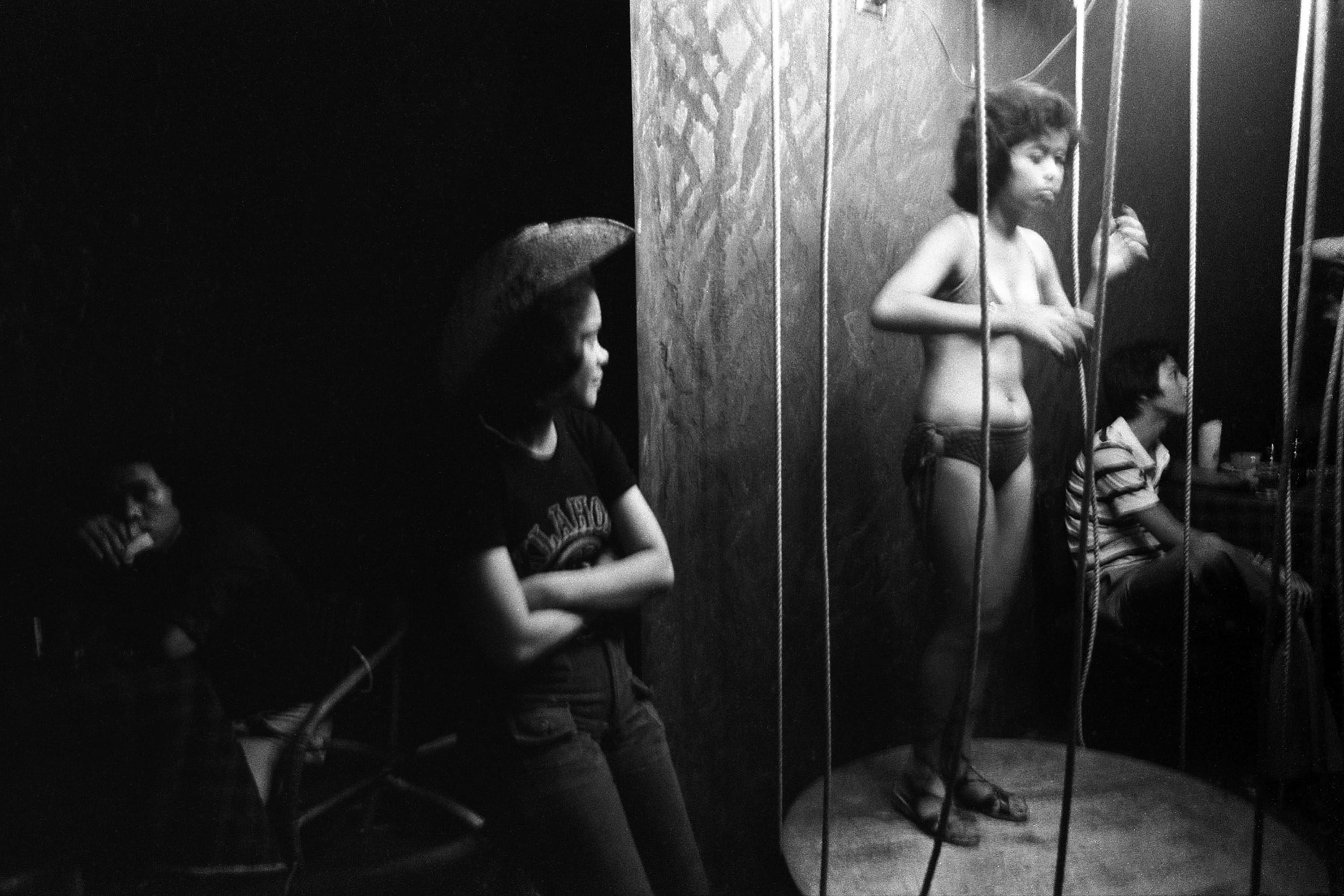
Manila, 1977

Hong Kong, 1985
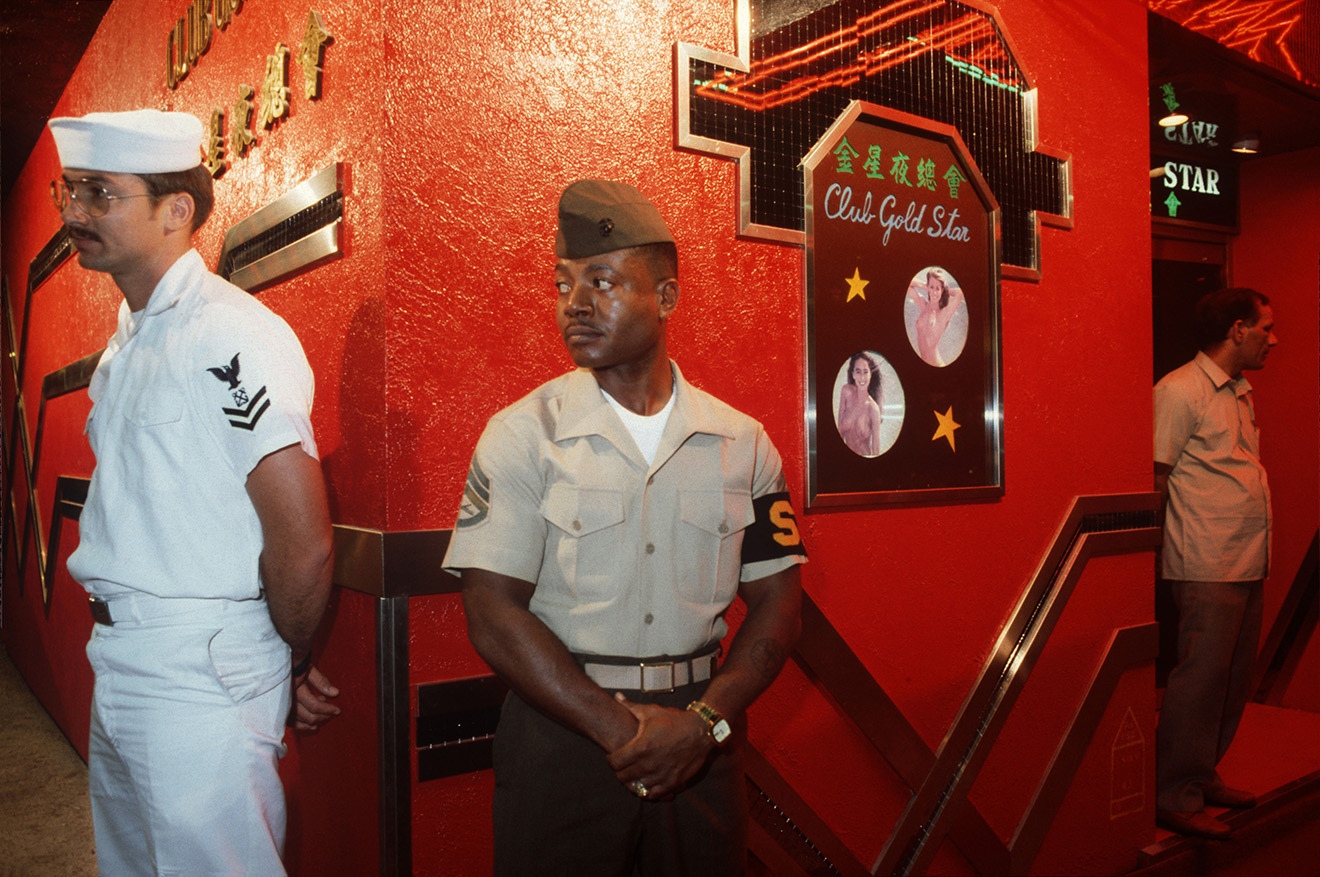
Club Gold Star, Hong Kong, 1985
If I asked you to name a song that you heard relentlessly in nightclubs during the heyday of your time in Asia, what would it be?
The one I can't get out of my head from Hong Kong in the early to mid-80s would have to be 'Relax' by Frankie Goes to Hollywood.
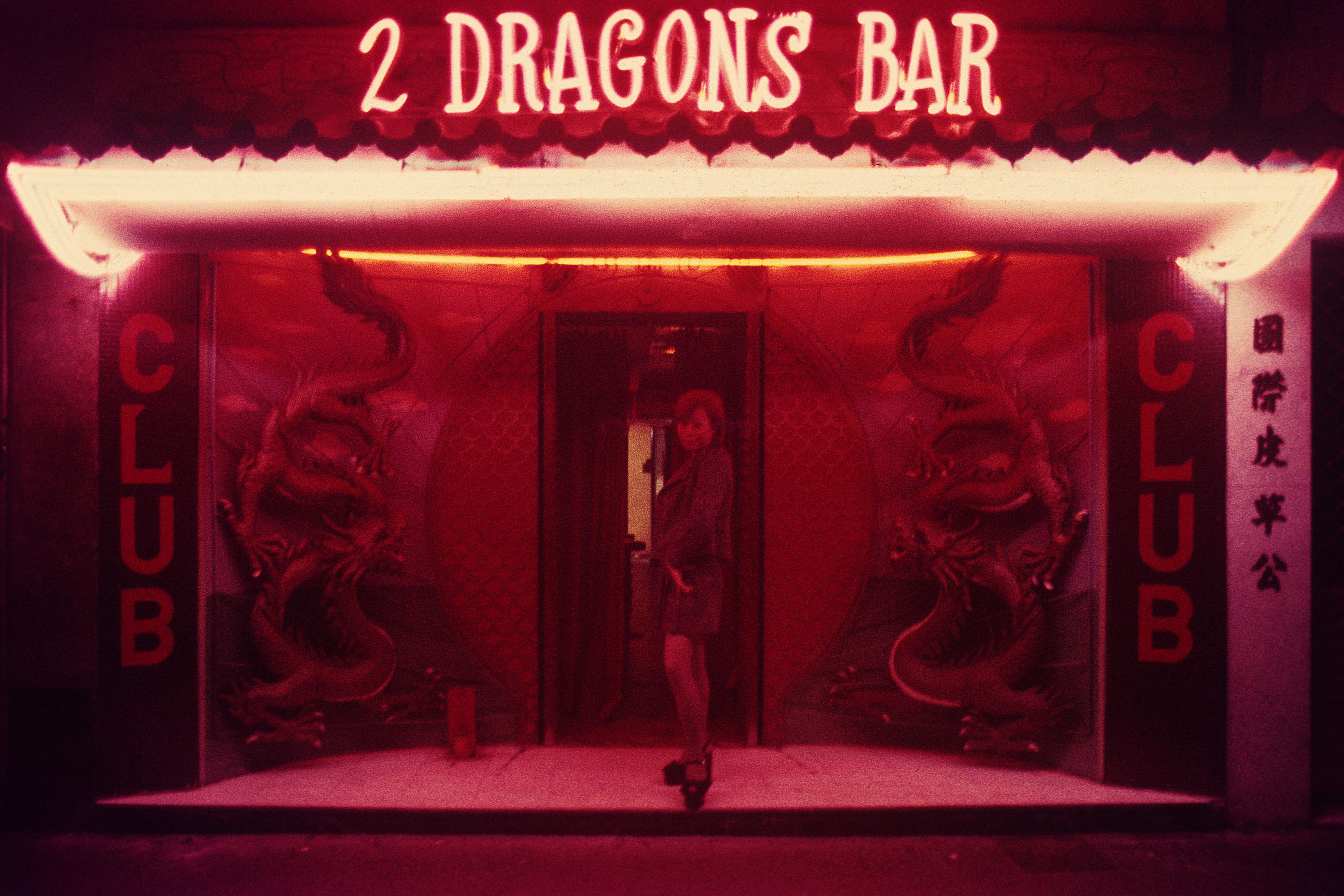
Two Dragons Bar, Hong Kong, 1985
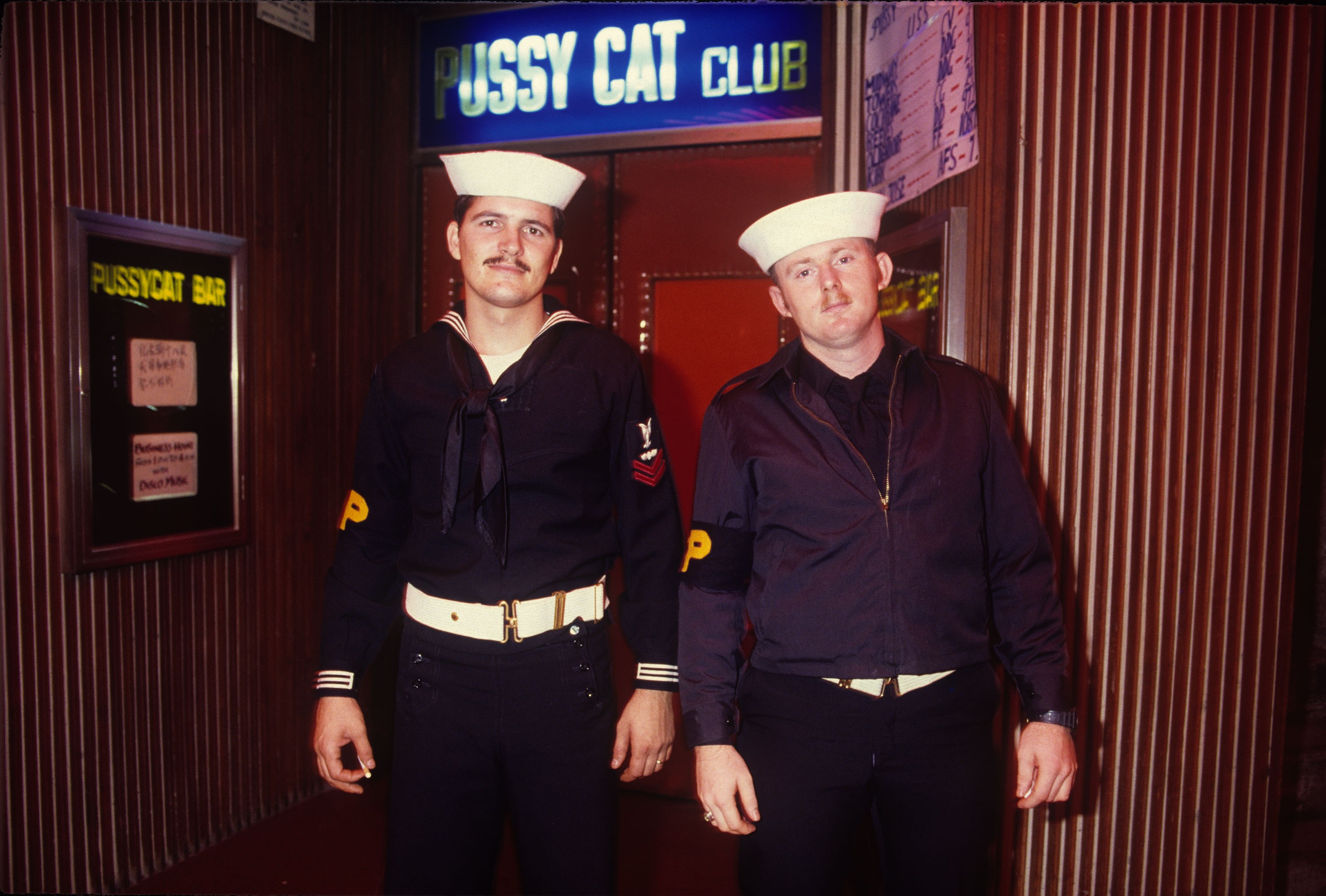
Shore Patrol, Pusscat Club, Wan Chai, Hong Kong, 1985
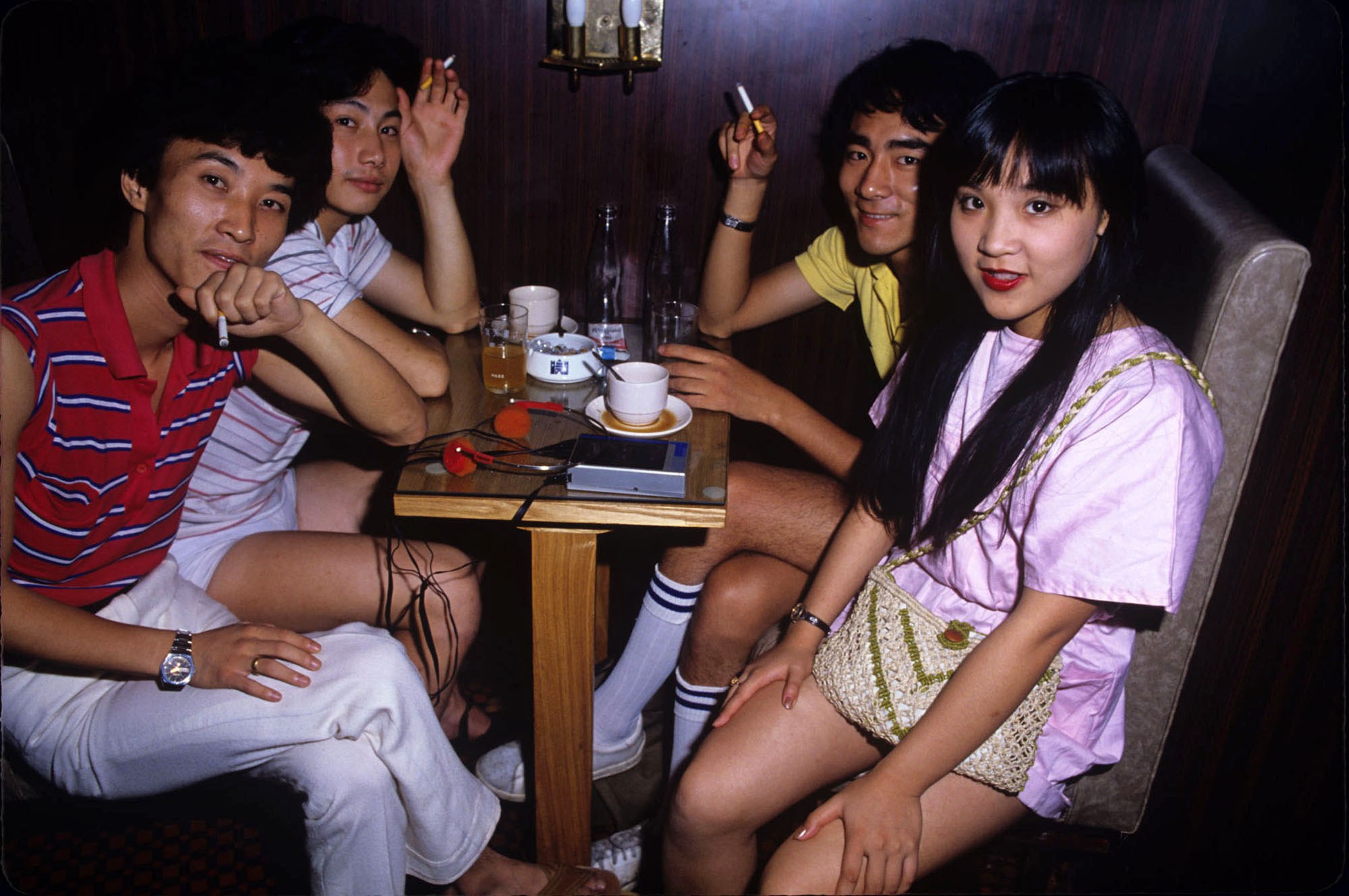
Shanghai, 1986
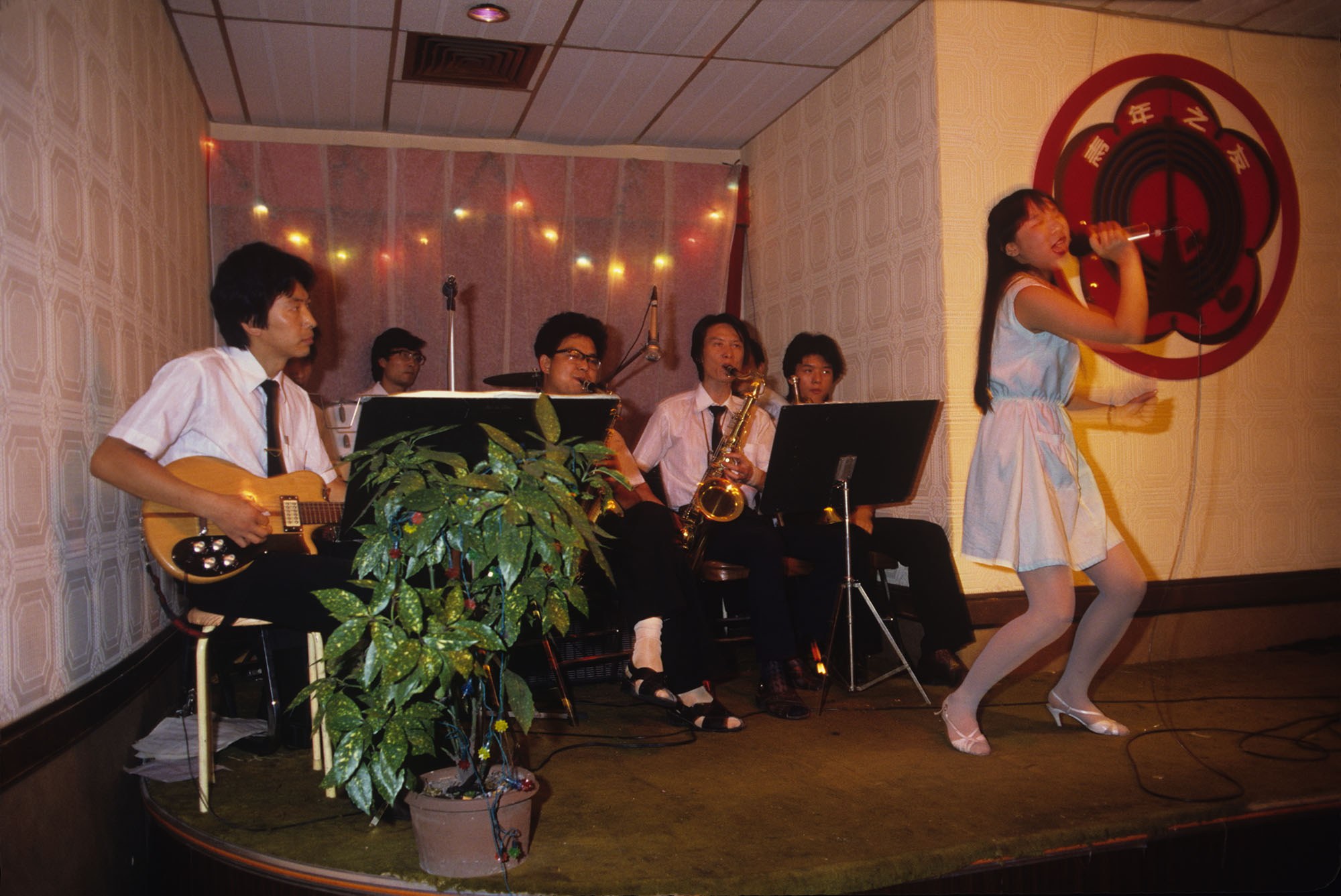
Shanghai, 1986
HK UNSEEN by Greg Girard runs until December 11 at Blue Lotus Gallery in Hong Kong. Find more information here.


